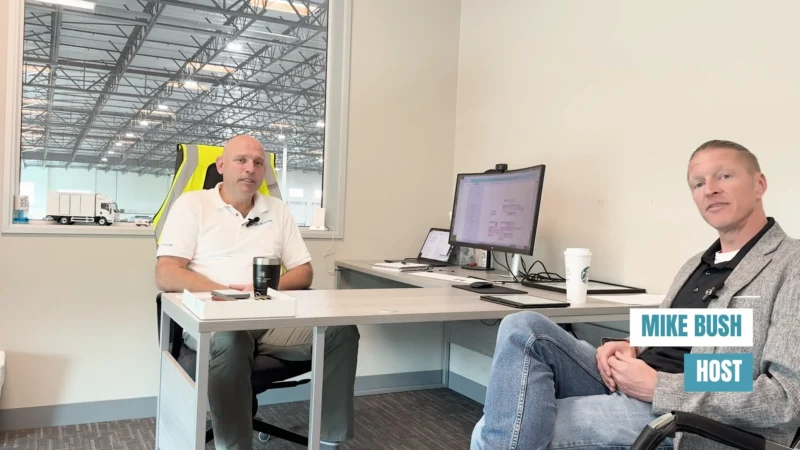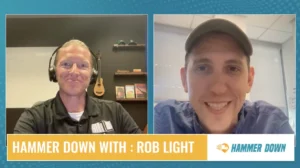Texas’ Recent EV Mandate is a Plus For Tesla. Will it Make Charging Easier to Access for EV Drivers?
As electric vehicles (EVs) gain traction the concept of the EV mandate will follow. The question isn’t just about the cars themselves, but the infrastructure supporting them. Two weeks ago, Texas mandated specifying that in order for electric vehicle charging companies to get federal funds, they must have Tesla’s charging technology at their charging stations. The decision has raised some eyebrows and concerns as some companies feel it’s an unreasonable requirement that needs more time.
Tesla has been a leader in the EV space, not only innovating in electric car technology but also in developing a robust supercharger network. The kicker, however, is compatibility. Many automakers are facing a crossroads; either invest in building their own charging infrastructure or utilize existing networks, like Tesla’s, which recently opened its superchargers to other brands.
But here’s where it gets tricky. Several other car manufacturers are considering the customer experience, which extends beyond just plugging in a car. For these companies, a charging station isn’t just a utility; it offers something poignant to their brand. Furthermore, Tesla’s superchargers may be convenient, but there are cons that particularly exist for cars with different batteries. Plus, there’s also a customer experience Tesla is missing that other charging technology companies are known for.
To digest what this means, Troy Beetz, Power Contributor at J.D. Power, had some insights to share about the recent mandate. Beetz is a multifaceted business leader with extensive experience in the automotive industry. He was the Chief Marketing Officer at DeLorean Motor Company, where he oversaw the brand’s relaunch. Beetz also worked at Karma Automotive in global marketing and product planning, and at Toyota and Lexus.
He indicated that smaller EV manufacturers will follow suit with the mandate due to having smaller capital. But bigger and well-known car manufacturers, like Toyota and others, could aim to champion their own solutions. Aside from that, Beetz added that superchargers can create a whole other dilemma with this EV mandate.
Beetz’s Thoughts on Texas’ EV Mandate
“I’m not 100% certain on the story, but I think it required that there needs to be, at least from Tesla also, they need to provide a CCS-1 adapter. And it’s also for superchargers, I believe. It’s access to the supercharger system through Tesla, not their level two chargers. I don’t know that it’s mandated. I know that there was some money earmarked, I think it was $7.5 billion to build an infrastructure for charging. Their supercharging stations, which has NACS, would qualify for the funds. That’s not to say that other companies will not have access to those funds because they will. I do like, and I think Tesla did this a long time ago, they had an open source platform on their engineering side, which included the NACS from the beginning. And any OEM could have adopted that infrastructure if they chose to. It’s not surprising that you see Fisker jumping on board, Rivian jumping on board. The idea is that they don’t have the capital to invest in a charging network, they’d rather utilize any money they have on the investment side with the product, which I think is a great idea. Building an infrastructure is important, but also is building the vehicle. And since Tesla has a significant amount of superchargers out there already, it makes sense. So I know BMW doesn’t, I know Toyota and Lexus don’t, Volkswagen Group probably won’t. And Porsche, which is obviously the huge elephant in the room, when you go Porsche, you go Volkswagen, you go Audi. I think the biggest issue that you’re going to have with that group is they largely have 800 volt batteries and Tesla is 400. So if you have an 800 volt battery with a supercharger, it’s not going to be the most efficient way to charge that vehicle. I think they also, they were looking at it, that they weren’t necessarily going to go down that road, that they may have an opportunity to build their own infrastructure. And I think that that piece, especially when you think about the brand side and the customer satisfaction side, they want to be able to control the entire journey with that customer from the purchase to the service side and through the charging side.
“And if you leave it largely to Tesla to create that infrastructure for how they interact with those charges, I think that’s probably the side that I would lean on, which is they’re not going to be able to control the charging side of that experience. I know a lot of charging companies are doing something different where they’re charging networks. And if you think about that, there’s a company called Volta. And if you ever had Whole Foods, Volta is in front of Whole Foods with those 58-inch digital screens. And they’re very interactive. They’re augmented reality. They have an opportunity to look at the car and know that which vehicle is charging that particular vehicle. They’ll know that if a Tesla drives up, they’ll know it’s a red Tesla. There’s a lot of different ways that people are going to be interacting with these charging stations. And I don’t know that Tesla actually has, they have a way to do it in terms of its charging, but they don’t have a way to do it that it’s interactive and it represents the brand. So I understand the dilemma there. I’m open to the idea that Tesla is opening up, I believe some of their supercharger stations, I think it was 7,500. Not all vehicles require supercharging stations. I think it’s great that you expand the network for sure, especially in Texas.
Beetz’s Additional Thoughts
“The issue is that even if you expand the network in Texas, if you ever charge your vehicle, you’ll see, I mean, the most I’ve seen in one station is 18 and that’s in Vegas. Most of the time the chargers are going to be free, but in the event that they’re not or they’re backed up, however many people are in line is about six minutes of waiting. And I still think that’s an issue in terms of, even if it’s a fast charger, there’s six people in line. So I think it’s a good idea. I have no issues with it other than that. I think in a way it wants to control the experience. And I don’t know that Tesla represents what BMW wants to represent in terms of as an experience. I think that’s the mandate. That’s the one that says, well, that’s the universal way for everybody to get charged. I think that’s the right way to go for sure. I don’t know that Tesla is the one to say that you can only use Tesla superchargers or charging network. If anybody’s going to build a network of chargers, I think NACS, if that’s the uniform where everybody’s going to be adopting that particular charging platform, then yeah, that’s the way you go. Putting Tesla in there, I think politicizes it when in actuality, what you’re really doing is you’re trying to just get a NACS funding. And the only way to get funding is if it’s an NACS charging network. And that’s fine. You’re going to be excluding and that’s okay. You’ll be excluding Porsche, Toyota and Lexus. They have, I think, their own path to a network of charging stations that they want to control. I think it’s no surprise that Tesla is in Austin. Would we have had the same sort of mandate if Tesla wasn’t here and they were still in Northern California? It’s convenient that Tesla is here in Texas and now they’ve moved their operations here, their headquarters in Austin, and now there’s this Texas only mandate. It is a little fishy. When you consider, geez, if I looked at the last stats before, it’s about 64%. When you look at EV sales, it’s still about 64% Tesla. So it makes sense that the largest manufacturer of electric vehicles should have NACS and then everybody else should be adopting it. It’s a large majority of customers that are in electric vehicles are in Teslas. And the 800-volt solution, that could come sort of with how BMW and Porsche want to go about it. But here’s the other thing too, is that those superchargers, again, they’re not the most efficient way to charge an 800-volt battery vehicle. Are you then going to require Tesla to create a charging station or charging network that supports 800 volts?
Beetz’s Final Thoughts on EV Industry
“So, then it’s a sort of a trickle-down effect that the OEM shouldn’t be penalized because they chose 800 volts over 400, and they can’t create a charging network that’s not supported by these funds because it’s not a NACS. So it gets more complicated, but I think for the common good, like what’s the right thing to do? The right thing to do is to create the easiest way for people to charge, to grow EV adoption. Even though people say that range anxiety doesn’t exist, it still exists today with EVs. You have people who are new adopters to EV, and the anxiety of driving 300 miles and not knowing if you’re going to be able to get back is there. And how awful is it going to be because you had a CCS and not an NACS that you can’t charge? So why wouldn’t this be the best thing for the industry? I think it’s a good idea. I don’t think it’s a Tesla thing. I think it’s, what’s the easiest way to adopt EV and make everybody comfortable? If it’s NACS, then that’s what it needs to be. I think the bigger piece is, you know, is hydrogen within that same system of charging? And I think there are multiple avenues to electrification. Electrification is one avenue from electrification. It’s still an EV. Its source is still hydrogen. But I don’t know what system that hydrogen uses, if it’s NACS or CCS. I imagine it would be none of those because they’re hydrogen. They’re not electric handles, they’re hydrogen. So no, but it is, now that I think about it, it’s really interesting, Toyota moved their headquarters to Texas. I mean, they’re all in. I used to work for Toyota. And their entire manufacturing is here. Their financial services is here. Their customer centers are here. Lexus is here. It’d be interesting to see if Tesla fights to see if they have to use NACS because Tesla’s in Austin. Why wouldn’t Toyota as a powerhouse decide they want to be CCS and get the same thing in Texas?”









